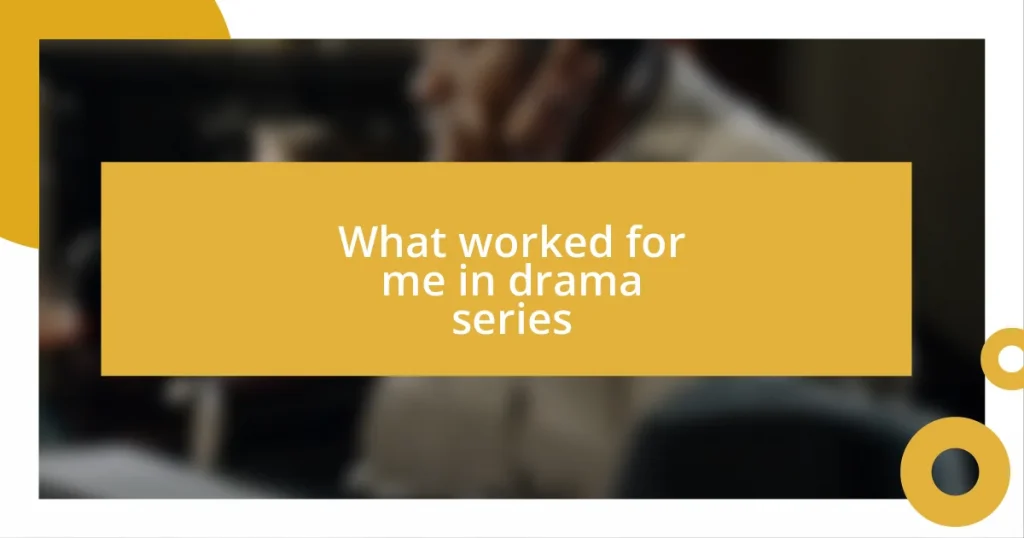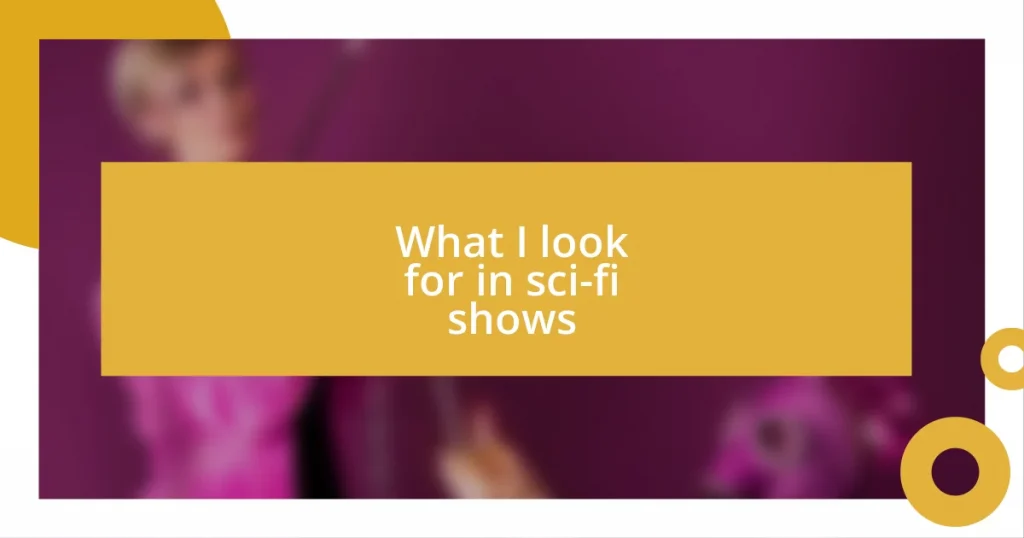Key takeaways:
- Video quality hinges on resolution, bitrate, and frame rate, each significantly impacting viewer experience.
- Essential to assess and upgrade equipment, including camera, microphone, and editing software, to enhance overall video quality.
- Optimizing videos for different platforms requires understanding specific audience needs and utilizing platform-tailored features for better engagement.

Understanding video quality factors
When diving into video quality, it’s crucial to consider resolution first. I vividly remember my early days of editing; I was enamored with the crispness of 4K resolution, only to realize how much it drained my laptop’s battery. Have you ever edited a project and watched the video quality transform before your eyes? It’s a remarkable feeling, amplifying what you intended to convey.
Bitrate comes next, and it’s often underrated. I recall working on a streaming project where the bitrate was too low. The resulting video was pixelated and frustrating for viewers. It’s a good reminder that maintaining a balance between quality and size is key; what good is a great video if it’s nearly impossible to stream?
One factor that often gets overlooked is frame rate. I once experimented with 60 fps for a fast-paced action scene, and it transformed the visuals completely. It made me wonder, how do different frame rates impact your storytelling? The right frame rate can evoke emotions and enhance the viewing experience, capturing the essence of what you want your audience to feel.

Analyzing your current setup
When analyzing your current setup, I’ve found that starting with your equipment is vital. Take a moment to assess your camera and microphone quality. I remember upgrading my microphone, and the clarity it brought to my videos was astonishing! It feels great to realize that something seemingly small can profoundly affect the overall video quality.
Next, you should evaluate your editing software and its capabilities. There was a time when I was trapped in using basic software, but once I switched to a more advanced one, my editing process became a breeze. These tools can drastically improve not only your workflow but also the finished product’s quality.
Lastly, consider your internet connection speed, especially if you’re streaming. I once faced major hiccups during a live session due to an unstable connection, and it’s an experience I’d rather forget. A reliable and fast internet connection is more than just convenience; it’s a necessity for delivering the high-quality content your audience deserves.
| Component | Importance |
|---|---|
| Camera Quality | Essential for sharp visuals |
| Microphone Quality | Critical for clear audio |
| Editing Software | Enhances editing efficiency |
| Internet Speed | Necessary for streaming |

Choosing the right recording equipment
Choosing the right recording equipment can significantly impact your video’s final quality. I initially bought a mid-range DSLR thinking it would suffice, but I quickly learned that the lens plays a crucial role, too. After switching to a higher-quality lens, the depth of field and overall sharpness of my shots improved dramatically, making my footage look much more professional.
Here are the key elements to consider when selecting equipment:
- Camera: Invest in a camera that meets your resolution and frame rate needs.
- Lenses: Consider the type of lens; a good lens can enhance depth and sharpness.
- Microphone: Prioritize a quality microphone; your audience will appreciate clear audio.
- Lighting: Proper lighting is essential; natural light can work wonders, but artificial lights can create a professional touch.
- Stabilization Tools: Use tripods or gimbals to ensure steady shots; shaky footage can be distracting.
Even the smallest upgrade can lead to a noticeable difference. I remember adjusting my lighting setup during a shoot and watching my footage transform—it was like night and day! The right equipment not only makes technical sense but also elevates the emotional tone of your content.

Implementing effective lighting techniques
Implementing effective lighting techniques can truly redefine your video quality. I remember the first time I experimented with three-point lighting; it was incredibly enlightening—no pun intended! The way the soft light wrapped around my subject created a warmth and depth that instantly enhanced my visuals. Have you ever noticed how flat lighting can make even the best camera struggles to shine?
One simple trick I’ve learned is to leverage natural light whenever possible. I often film during the golden hour, that period just after sunrise or before sunset. It’s like nature’s very own filter, bathing everything in a magical glow. However, if I’m shooting indoors, I make sure to position my lights to avoid harsh shadows and that eerie “deer in headlights” look. Speaking of which, I often play around with inexpensive softboxes—I was shocked by how much they elevated my home video setup!
Additionally, balancing your lighting colors can massively improve your video aesthetic. I once shot a scene with mixed light sources, and it gave my footage a weird bluish tint that ruined the vibe I was aiming for. Now, I always keep an eye on the color temperature of my lights. A quick adjustment with gels or filters can harmonize the overall look. Have you tried color grading your lighting? It’s a game-changer for consistency!

Editing tips for better quality
Editing plays a crucial role in enhancing video quality, and I’ve discovered some techniques that can really make a difference. One of my go-to practices is using color correction tools right off the bat. I recall the first time I adjusted the saturation and contrast in my footage; it was like bringing a painting to life. Suddenly, the colors popped, and my viewers were more engaged. Have you ever thought about how a slight tweak in color can change the entire mood of your video?
Another effective tip is to pay attention to your cuts and transitions. Initially, I wasn’t too keen on making my edits seamless—I thought jarring transitions added flair. Boy, was I wrong! One time, I just let my clips flow without harsh cuts, and the result was a fluid narrative that felt much more professional. It’s crucial to ensure that each cut supports the story and doesn’t distract the viewer. What’s your editing style? Focusing on smooth transitions and pacing can keep your audience immersed in the experience.
Lastly, sound design deserves your attention. In my early videos, I often neglected background music and effects, thinking they weren’t necessary. But once I started incorporating subtle ambient sounds to create atmosphere, it transformed the viewer’s experience entirely. It’s fascinating how audio can evoke emotions and enhance storytelling. Have you ever noticed how the right soundtrack can leave a lasting impression? By being intentional with sound, you truly elevate your video’s overall quality.

Optimizing for different platforms
When it comes to optimizing video quality for different platforms, I’ve definitely learned that each one has its quirks. For instance, I remember the first time I uploaded a video to Instagram; I was shocked at how compression altered the crispness I had worked so hard to achieve. Now, I make it a point to upload videos with the appropriate dimensions and bitrates—it’s worth the extra consideration. Have you noticed how some videos just look ‘off’ when viewed on specific platforms?
I also find that understanding the audience on each platform can dramatically influence content style. Creating a YouTube video feels different compared to a TikTok clip; the pacing and visuals need to reflect that platform’s vibe. I once created a detailed tutorial for YouTube, but when I tried to repurpose it for TikTok, it fell flat. I realized that a snappy, eye-catching approach works wonders on a platform where attention spans are short. Have you ever tried adapting your videos for different audiences? It’s both an art and a science.
Lastly, utilizing platform-specific features is key. Recently, I discovered how leveraging Instagram Reels’ editing tools truly sets my content apart. The built-in effects can provide a unique flair, making my videos pop—even if the original footage was standard. I’d often overlook these tools thinking they weren’t necessary, but now, they’ve become an integral part of my workflow. Have you explored the full capabilities of your preferred platforms? Embracing these features can elevate your content significantly!

Measuring and reviewing results
Measuring the results of my video optimization efforts is a fascinating journey in itself. After implementing various techniques, I use analytical tools to track viewer engagement and watch times. I remember the excitement I felt when a notable increase in my viewer retention rate confirmed that my edits were resonating. Have you ever experienced a breakthrough moment where the numbers finally reflect your hard work?
I also dedicate time to watching my videos objectively after making changes. It’s amazing how stepping away and returning later can give you fresh insights. In one instance, I realized that the pacing was too fast in certain sections, which might have overwhelmed viewers. By making those sections smoother, I noticed a boost in comments and interaction. How often do you revisit your work to really gauge its impact?
Beyond numbers, I embrace audience feedback as a critical factor in measuring success. I vividly recall a subscriber reaching out to share how a particular video sparked their creativity. That connection made me realize that optimizing isn’t just about the technicalities; it’s also about emotional resonance with viewers. It got me thinking: what truly drives your audience’s passion, and how can you tap into that?















